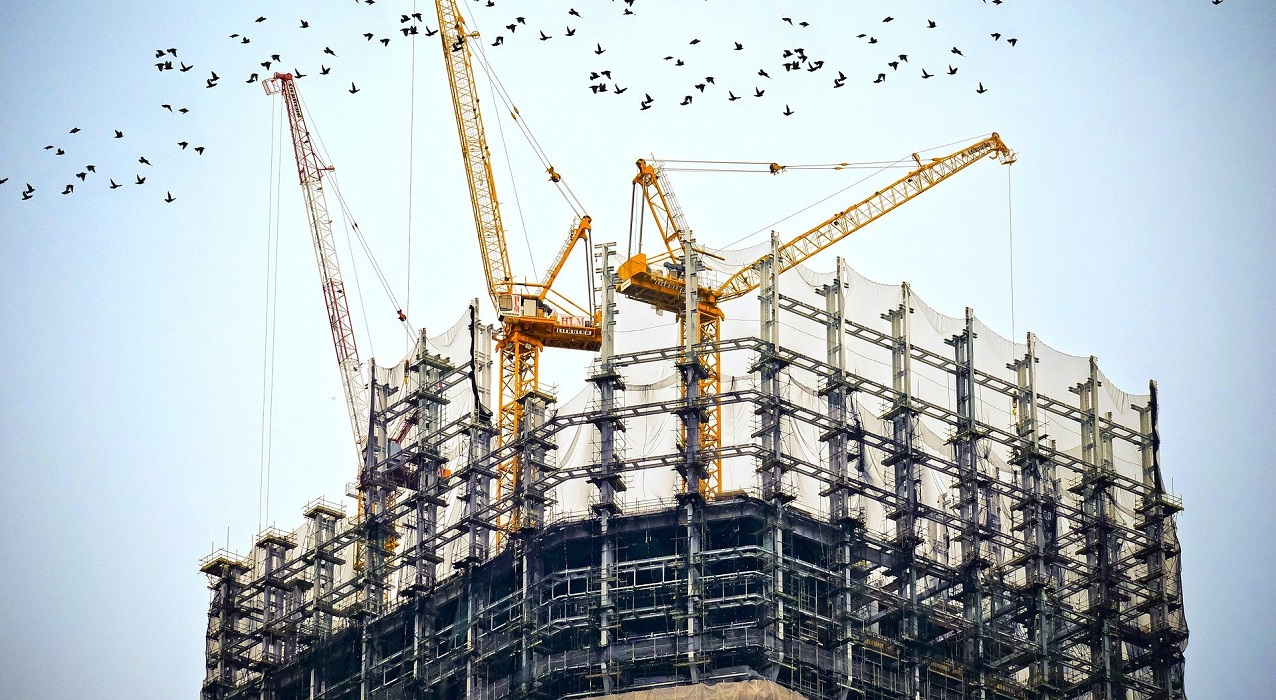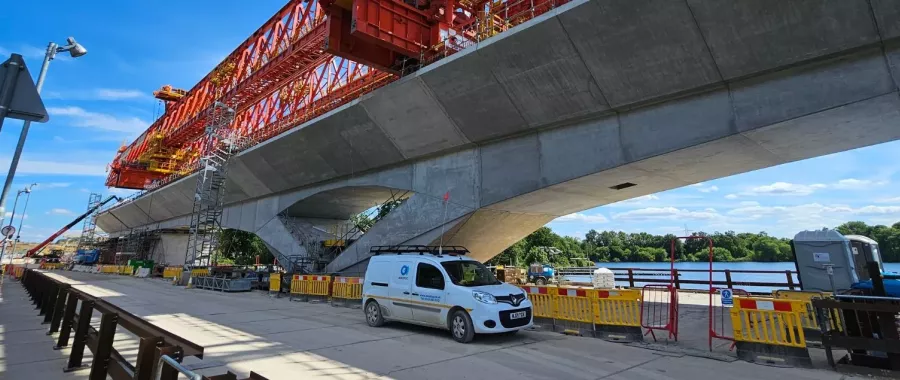SOCOTEC Monitoring provided extensive monitoring systems to measure the impact on above ground assets during the demolition phase of the Soho Place development works, and continues to monitor a range of London Underground and Crossrail assets as construction progresses at this high profile site.
Summary of works
Client – ARUP
Start Date - January 2017
Developing above and around transport infrastructure in one of the busiest areas in Central London is complex; existing structures must be retained and safeguarded, and the operation of the busy railway must not be compromised.
SOCOTEC Monitoring provided extensive monitoring systems to measure the impact on above ground assets during the demolition phase of the Soho Place development works, and continues to monitor a range of London Underground and Crossrail assets as construction progresses at this high profile site.

Case Study
Site Background

As part of Crossrail 1 the Elizabeth Line, Europe’s largest infrastructure project, the existing Tottenham Court Road station is being upgraded. The project also includes a new over station development, Soho Place - formerly known as 1 Oxford Street. The 285,000 sq. ft mixed-use scheme spread across two buildings is being constructed above the Tottenham Court Road Crossrail and London Underground Stations, following the completion of the upgrade works.
The larger of the two buildings stands on the corner of Oxford Street and Charing Cross Road and incorporates the station entrance, along with 209,000 sq. ft of offices and 36,000 sq. ft of retail space over eight floors. Complementing this, to the south is a self-contained 350-seat theatre, with offices above. The theatre has been designed in collaboration with Nica Burns and her company Nimax Theatres and offers a highly versatile performance space which promises to become a significant landmark within the West End's theatreland.
As part of Crossrail 1 the Elizabeth Line, Europe’s largest infrastructure project, the existing Tottenham Court Road station is being upgraded. The project also includes a new over station development, Soho Place - formerly known as 1 Oxford Street. The 285,000 sq. ft mixed-use scheme spread across two buildings is being constructed above the Tottenham Court Road Crossrail and London Underground Stations, following the completion of the upgrade works.
The larger of the two buildings stands on the corner of Oxford Street and Charing Cross Road and incorporates the station entrance, along with 209,000 sq. ft of offices and 36,000 sq. ft of retail space over eight floors. Complementing this, to the south is a self-contained 350-seat theatre, with offices above. The theatre has been designed in collaboration with Nica Burns and her company Nimax Theatres and offers a highly versatile performance space which promises to become a significant landmark within the West End's theatreland.
Monitoring During the Demolition Phase
The first phase of the over station development works involved the demolition of several existing structures along Oxford Street. In January 2018, SOCOTEC Monitoring was contracted to install a manual monitoring system to measure the impact of the demolition works on several London Underground assets located in close proximity – the new Tottenham Court Road station entrance at the North East end of the site and the Falconberg Mews building on the West side of the site.
SOCOTEC Monitoring installed four mini 'L' Bar prisms on each of the two London Underground buildings, with BRE style levelling points on the facades of the buildings located below the prisms, to monitor any vertical movement of the structures caused by the demolition works.
To monitor heave and settlement in the surrounding area, brass levelling studs were installed in the ground within the site and in the kerb stones of the pavements outside the site. 11 levelling studs are located around the perimeter of the two buildings within the site and, outside the site in the pavements either side of Oxford Street, a further 17 are installed on the South pavement and 15 on the North.
The first set of baseline readings were taken at the end of January 2018, followed by a schedule of monthly manual monitoring for five months during the demolition phase. Monthly monitoring continued for an additional three months post-demolition, with a further four months of bi-monthly monitoring scheduled. Following each monthly survey, the readings were sent to SOCOTEC Monitoring’s technical department to input into Calyx OMS - SOCOTEC Monitoring’s online data visualisation platform - for data processing and visualisation, and creation of a monthly report for the client.
These monitoring works were the prelude to the main works contract, which SOCOTEC Monitoring is also pleased to be working on, and which involves monitoring the impact of the construction works on the London Underground and Crossrail running tunnels.
Monitoring During the Main Works Construction Phase
The monitoring system in use during the construction phase is required to measure the impact of the construction works on structures across the two sites, safeguarding the London Underground and Crossrail platforms and running tunnels directly below the site, as well as monitoring the basement and sub-structure elements of the new Over Site Development (OSD) as it is constructed.
The system monitoring the London Underground assets uses arrays of prisms in the Northern and Central line tunnels and platforms, with manual surveys recording the resulting data. Electrolevel beams and tilt sensors feature underneath the escalator trusses as well as arrays of tiltsensors and MEMS beams above the escalators, hidden behind the ceiling cladding panels.
Electrolevel beams have been installed in four cross passages, along with multiple arrays of manually read prisms and precise levelling points in cross passages and public areas throughout the station and in back of house locations.
At the Crossrail site, strings of electrolevel beams monitor the platform and running tunnel, as well as featuring crackmeters installed within three passageways where they interface with the main station box.
To allow monitoring for deformation of the pile walls during excavation of the basements and construction of the sub structures, inclinometers were installed within the piles for the OSD, and strain gauges installed to temporary props and connected to wireless nodes, thus avoiding running cables all around the site.
In addition to monitoring these below ground structures, further instrumentation is installed above ground on some of the buildings SOCOTEC Monitoring was monitoring during the demolition works, and to additional assets on Oxford Street. As with the demolition works, all data is delivered to the client team through Calyx OMS, using a host of informative site plans and plots, providing automated alerts to any movement threshold breaches and a monthly report for the client.
Mehdi Alhaddad, Senior Consultant Engineer at ARUP, commented:
“This project involved probably the most critical piling works undertaken in close proximity to London Underground tunnels, and one of the most critical excavations, in recent years. The monitoring system installed by SOCOTEC Monitoring provided me with the data I needed to make informed critical decisions. I was very pleased with the prompt responses and the level of knowledge demonstrated by their team, which made a big difference when we needed to make quick decisions to ensure the safety of our work.”





